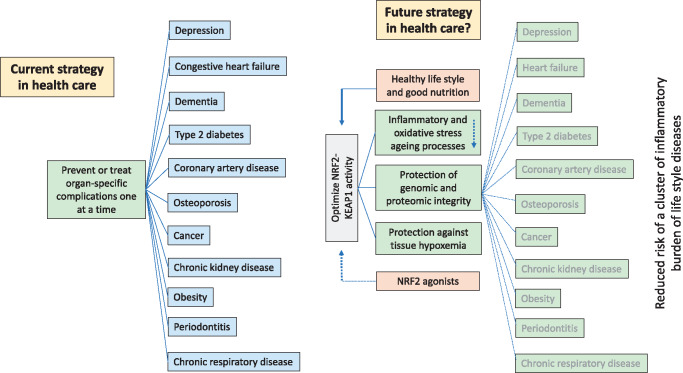FIGURE 2.
Burden of lifestyle diseases accumulate with age. The current approach in health care to target and treat individual burden of lifestyle diseases in isolation may be effective in the short term, but since burden of lifestyle diseases tend to cluster, this approach may not increase the number of healthy years of living much, with little impact on the gap between ‘lifespan’ and ‘healthspan’. An alternative approach would be to investigate if age-related diseases associated with inflammation and oxidative stress could be treated more effectively by modulating some fundamental mechanisms of ageing per se and decrease the risk of a cluster of burden of lifestyle diseases simultaneously. Since decreased expression of NRF2–KEAP1 characterizes burden of lifestyle diseases, studies should be conducted to find out if long-term NRF2 stimulation could maintain redox, protein and metabolic homoeostasis and prevent the ‘NRF2 diseasome’ cluster and increase the number of years of healthy living by reducing the risk of multiple diseases simultaneously.

